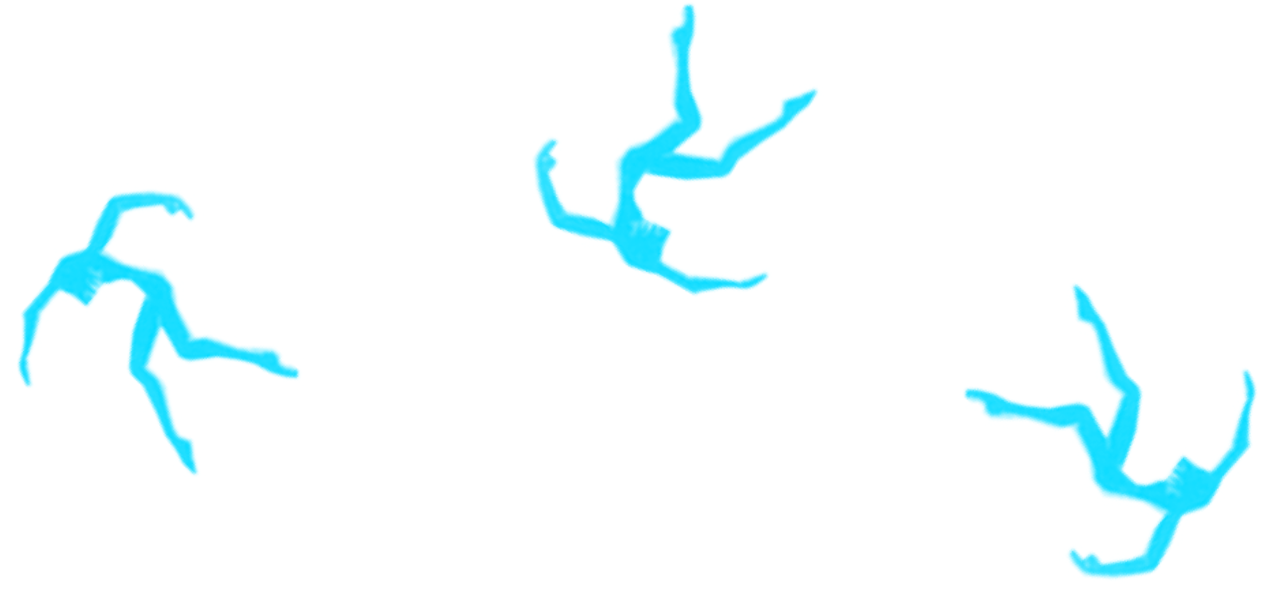
Petites traces of movements: Isolde Klietmann by Marcela López Morales
Isolde Klietmann (Marburg, 1908 – Mendoza, 1993) founded a department for modern dance at the Musikschule des Musikvereins in Linz in 1927, which was the former institution of the dance department at the Brucknerkonservatorium and today the Institute of Dance Arts at the Anton Bruckner Privatuniversität.
The niece of Isolde Klietmann, Monika Klietmann, showed us a picture with small, fine paper cuttings that Isolde Klietman made with nail scissors during a hospital stay. The cut-out figures are approx. 2.5 cm in size and glued together in groups.
Marcela López Morales shows how she takes up the migratory traces of Isolde Klietmann, who fled to Argentina with her Jewish husband in 1938. She explores modes of archiving in dance and repertoire in order to reflect on the relationship between archive and corporeality, while questioning our imaginary and historical construction around dance. Therefore, Klietmann is taken as a trigger for problematising modes of appropriation, transformation, documentation and re-signification in dance practices. This includes an analysis of media transformation processes.
(Text: Rose Breuss)
‘Klietmann: petites traces of movements’ starts from a biographical perspective in the search for traces of the artistic development of the dancer, choreographer and teacher Isolde Klietmann (Marburg, 1908 – Mendoza, 1993).
My first encounter with Isolde’s practices…
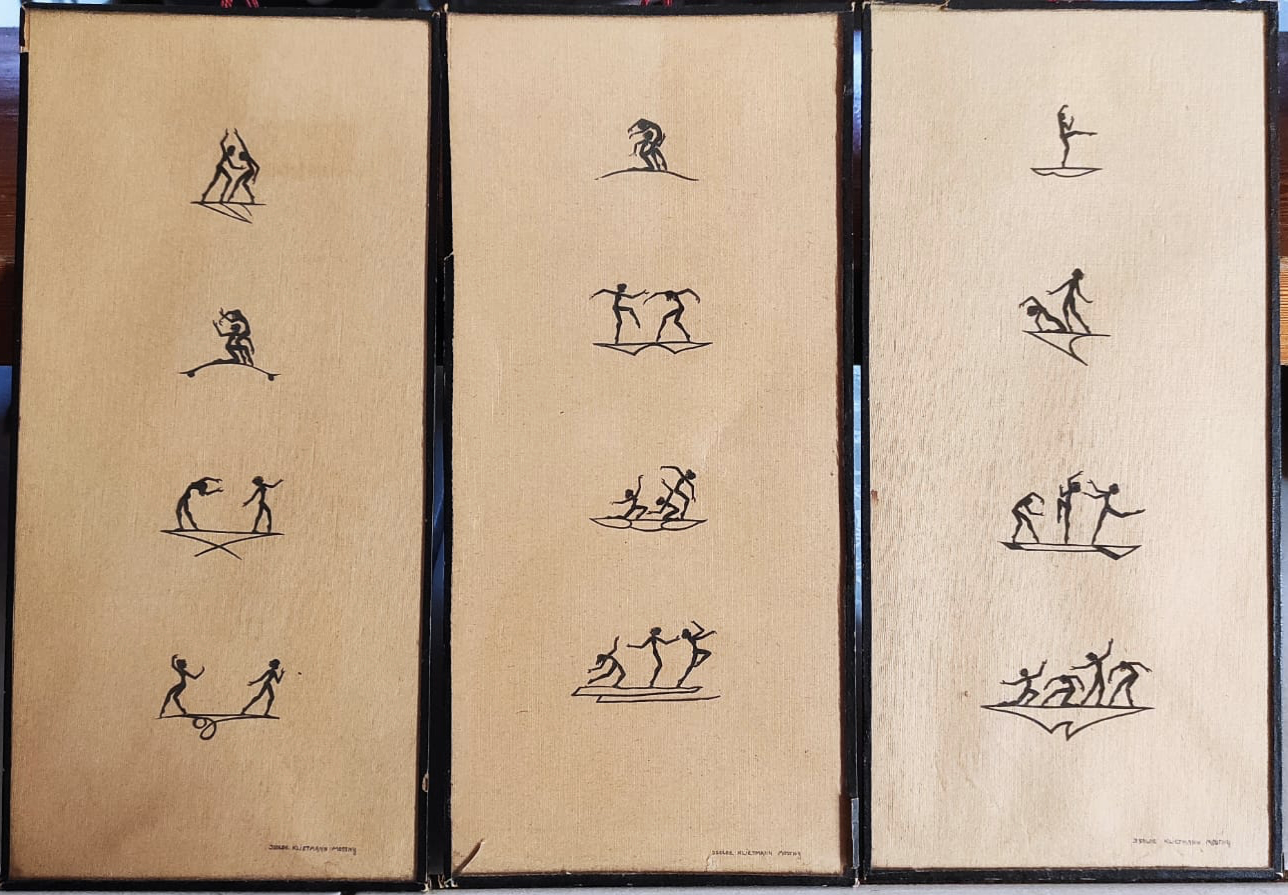
Isolde Klietmann was part of the generation of dancers who was educated under the principles of the stylistic movement known as Viennese Ausdruckstanz. Some of the training and dance education that appear in her curriculum (Hager, Kumpar, Moser, Wapper, 1999) include a semester at Mary Wigman School in Dresden; three years at Ilse Larsen School of Dance and Gymnastics; and four years at the National Academy of Music and Performing Arts in Vienna (mdw) with Prof. Gertrud Bodenwieser and Prof. Grete Wiesenthal. Between 1924 and 1932 she was a dancer in the dance group of Ilse von Larsen, as well as in the “Ballet of Modern Expressive Dancing” (Tanzgruppe Bodenwieser) by Gertrude Bodenwieser. As a dancer in the Tanzgruppe Bodenwieser, Isolde toured internationally to various European cities. In addition she was ballet mistress at the Landestheater Linz for two consecutive seasons in 1930 and 1931.
In 1927 Klietmann founded the Abteilung für Modernen Tanz at the Musikschule des Musikvereins in Linz, which was the former institution of the dance department at the Brucknerkonservatorium and today the IDA Institute of Dance Arts at the Anton Bruckner Privatuniversität.
The artistic development of Isolde Klietmann in Austria was interrupted in 1938 when she migrated to Argentina with her husband (Hans Mostny) due to the arrival of the National Socialist regime in Austria. Isolde settled in Mendoza (Argentina) where she opened her own dance studio under the name “Escuela de danzas y gymnasia rítmica, estudio de arte coreográfico: Isolde Klietmann”. She continued working in the dance field until her death at the age of eighty-five.

My main interest about Isolde Klietmann is to identify migratory traces, focusing on dance and its praxeology as the central theme. I explore modes of archiving in dance and repertoire in order to reflect on the relationship between archive and corporeality, while questioning our imaginary and historical construction around dance. Therefore, Klietmann is taken as a trigger for problematising modes of appropriation, transformation, documentation and resignification in dance practices. This includes an analysis of media transformation processes.
This ambitious artistic research on Isolde Klietmann (work in progress) consists of two complementary archival stages. On the one hand, the historical material available on Isolde in Austria in which Klietmann: petites traces of movements is framed. On the other hand, the archival material available on Isolde in Mendoza (Argentina). The archives available in these two locations are very different and diverse.
For the first archival phase located in Austria, I focused on the scarce but relevant material available. Klietmann: petites traces of movements is part of this stage, and therefore comprises and organises selected dance-specific material. For this project I concentrated on the only dance notation to which I had access and which was made by Isolde herself: little dancers dancing.
For the second archival stage located in Mendoza, I focused on transversal and transcultural collaboration with former dancers of Isolde Klietmann. The research concentrates on the available repertoire that is kept alive in the bodies and practices of Klietmann’s former students – dancers, teachers and/or current retirees. The testimonies were all part of the “Isolde Klietmann: Gimnasia, Danza, Arte Coreográfico” between the 50s until the 90s in the city of Mendoza. They also were part of the oral testimonies of the ‘performative interviews’ conducted by myself in Mendoza during the summer of 2023. The performative interviews were a praxeological artistic research in collaboration with thirteen testimonies. Through horizontal exchanges in the transmission of knowledge, the analytical study was linked to the investigation of modes of composition, choreographies, class exercises, class structures, pedagogical modes and everything that can be considered of interest for the praxeology of dance.
Klietmann: petites traces of movements, a micro-study for Movement Machine
Klietmann: petites traces of movements comprises part of my research work on Isolde Klietmann (work in progress). For this project, I focused on the only notation material I had access to and which was made by Isolde herself: little dancers dancing.
These small figures, to which I had access thanks to Monika Klietmann and Rose Breuss, are the only Isolde notations I could come across in the course of my research. That is to say that I did not have the chance to find any other notations written by Isolde. While this could be a desolation due to the scarcity of material, my perspective is the opposite. These notations, made into drawings, are proof that her figurines contain and retain a certain vocabulary, speak of her way of seeing movement, i.e. reflect specific praxeological knowledge and methodological potentials (Breuss, 2023).
In Klietmann: petites traces of movements the focus is on small figures of tiny dancers in movement. This material consists of a collection of three rectangular frames with brown paper backgrounds and black figures of dancers. The size of the frames is approximately 50/60cm each. The small dancers have a size of 2,5cm. These dancers project under their figure their own shadow or the halo of a path. In each frame there are four sequences of movements. These sequences consist of one, two, three or four dancers in each one. In each frame, the movement sequences are arranged vertically. The order of the frames is random.
The figurines were the first material I encountered related to Isolde’s artistic work. A notable detail is that these figures were made by Isolde Klietmann herself. Isolde’s niece, Monika Klietmann, who generously shared the material, told us that these figures were made by Isolde using nail clippers when she was ill (or undergoing treatment) in hospital. The fact that these figures were cut out with nail clippers means that the little dancers are full of minute details. The contours of these mini dancers are defined with worked musculatures, expressive hands, tension in contractions, group composition, etc.
The analysis of the figurines aims to open up spaces for plural theoretical and praxeological reflections in relation to different ways of approaching the archive from body-oriented processes emphasising the “dancer’s role as an agential researcher of/in/through dance” (Jeschke, 2017:1). It is worth naming some stages that were articulated in a complementary way in the process of approaching the material:
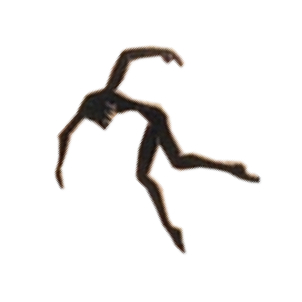
Reading process
Through the so-called „kinesic intelligence“ (Bolens, 2012), a recognition between observation and motor experience in the reading of the image which requires the dancer-researcher’s body-knowledge to function simultaneously as subject and object of research (López Morales, 2023)
“[…] in the reading and interpretation processes of the dancers, structures and grammars of the body-space-time-related actions and their variables open up” (Breuss, 2023: 117).
(Breuss, 2023: 117)
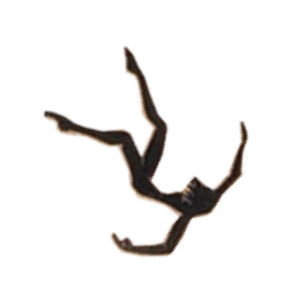
Transferring process:
It “[…] emphasizes the dancer’s agency, which refers not only to the action of observing, reading or analysing dance (a primarily visual action) but to the possession of the motor representation of an observed action”.
(Lopez Morales, 2023: 140-141
The figurines provide fragmentary information that invite the reader to delve into its own embody knowledge, body memory, bodily experience and performed acts.
Creative-Artistic process:
It has to do with transmediation and the potential that exists in the interaction with historical material, notations, scores, and its application and re-signification/re-contextualization during the interconnected layers of a choreographic composition.
Choreography, „[…] considered as a syncretic construction of the multiple sediments of experience available to the dancer […]“(Cortes Alberti, 2023: 136) and the available information in the notations which gives access to „a ‘multiplicity’ of emerging motor reservoirs of ‘relations of elements as a modus of becoming’” (Breuss, 2023: 123) establishes enriching tools in and for contemporary dance making and artistic research.
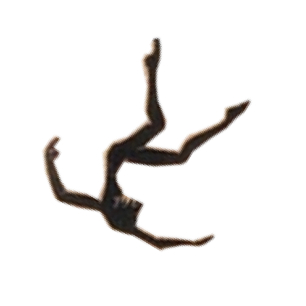
Rehearsing traces of dances…
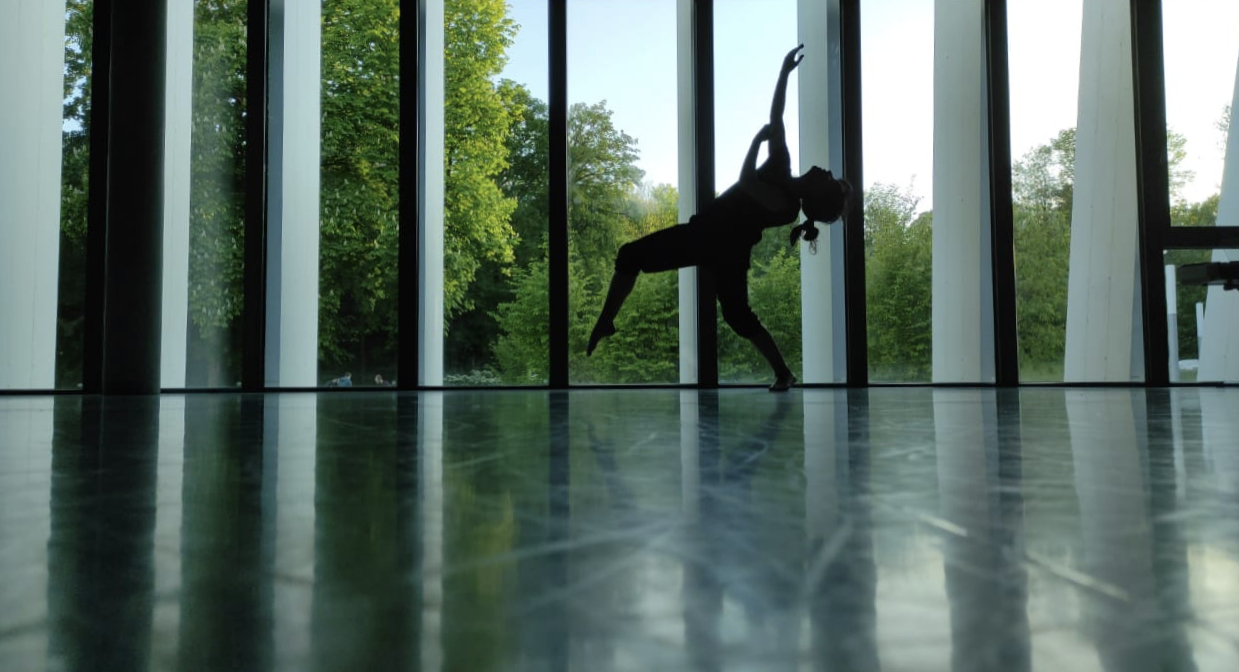
…through traces of dances…
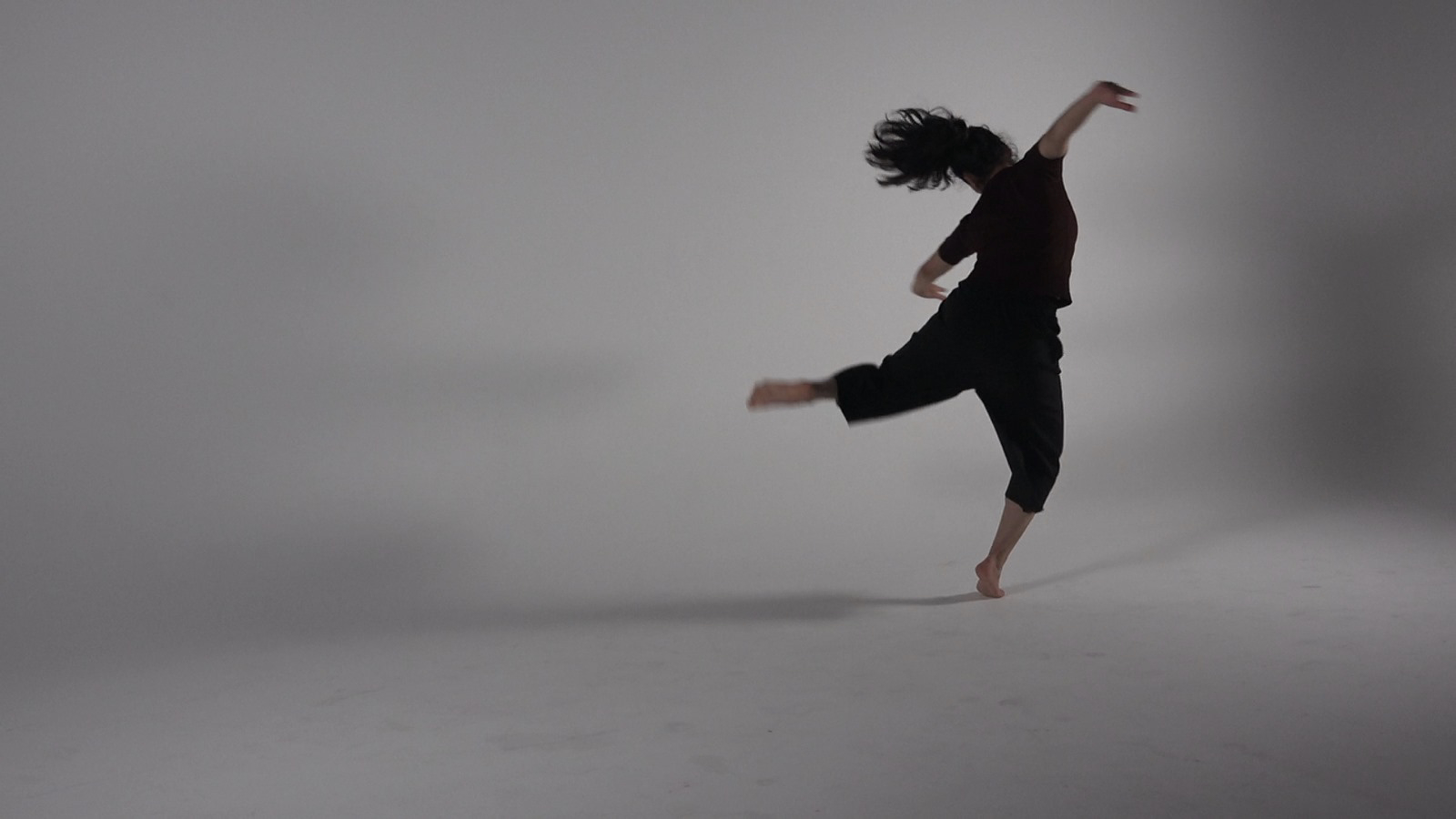

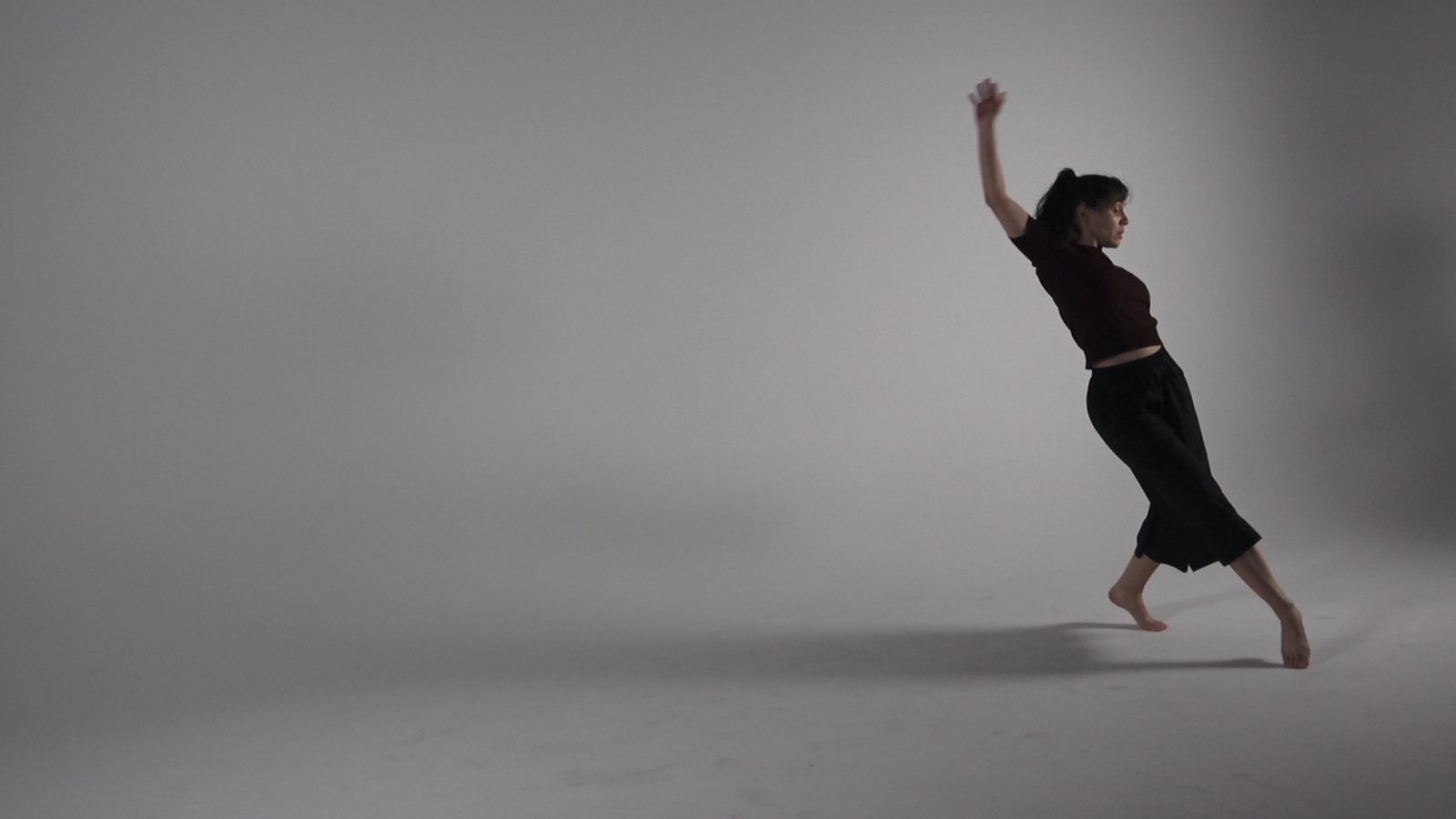
The positions of the mini-dancers were taken as an instant that composes a sequence of danced movements, i.e. they are a handmade photograph by Isolde. The approach to the material does not attempt to make a literal translation of the positions but rather to understand the physical/motoric mechanisms needed to arrive at those positions. The curiosity was set on the absence of movement, those unrepresented spaces – absent spaces and yet present. In that sense, the aim was not to reproduce a ‚posé‘ but to investigate possible pre-movements and post-movements to those representations of the mini-dancers. The figures are suspended in a continuous oscillation between the vertical axis, balance and lack of balance.
VIDEO – Sequence 1:
Resonant dance: solo (2´33”)
To compose a choreographic sequence, proposing a „stable“ organisation of the movement material and establishing a specific way of moving from a starting point to an end point through the selected positions.
VIDEO – Sequence 2:
Exploring ways of passing through: duo (2´07”)
VIDEO – Sequence 3:
Exploring ways of passing through: trio (1´40”)
The transmediation of the figurines is presented as an operative fiction in which the theatricality of the dancer makes us aware of the material force and capacity for agency of documents in interaction with the post edition.
The post edition allows an encounter in the same space of the same dancer in different moments. The same dancer is now moving at the same time and same space in multiple ways.
Choreography + Improvisations = always back to the starting material: figurines.
VIDEO – Sequence 4:
group constellation (2´27”)
In the audiovisual narrative we play with fragments of improvisation and the possibility of a group dance – not a minor aspect of Isolde’s choreographies.
The mediation between the different media serve not only as means of exploring possible encounters or miss-encounters, but also as activation of theories and ways of identifying discourses – but above all as spaces of dialogues and frictions between realities in which we find ourselves in our artistic practices.
VIDEO – Sequence 5:
“waves” and “angular lines” (2´27”)

A hip defying gravity
Hands in the wind
Feet floating
Learning from the clouds Floating
Flying Unraveling a puzzle
Building diagonals
The shadow accompanies and dreams
Silence reveals itself
(Poem written by the video maker, Fatima El Kosht)
Una cadera desafiando la gravedad
Unas manos al viento
los pies flotando
Aprende de las nubes
Flota
Vuela
Desarma un rompecabezas
Construye diagonales
La sombra acompaña
y sueña
El silencio se deja ver
(Poema escrito por la realizadora del vídeo, Fatima El Kosht)
Marcela Mariana López Morales
Marcela Mariana López Morales was born in Buenos Aires, Argentina. She is a professional dancer, choreographer, and pedagogue who articulates these three fields of dance in a constant dialogue between praxis and theoretic research. Her formal professional training is VET in Dance, Professional Dance Conservatory Reina Sofía (ES); Bachelor’s Degree in DancePerformance at National University of Arts (AR); Bachelor’s Degree in Arts & Dance Pedagogy (BA) at Anton Bruckner Privatuniversität (AT); and Master of Arts (MA) at Anton Bruckner Privatuniversität (AT). Currently, she is carrying out her Doctoral studies at Kunstuniversität Linz (AT). Since 2019, she has focused on archival and notational dance research and its modes of translation into dance production under the project “Cie. Of(f) Verticality” and she is involved in the artistic research project “Atlas of Smooth Spaces” funded by the FWF.
Bibliography
Bolens, Guillemette (2012): The Style of Gestures: Embodiment and Cognition in Literary Narrative, Baltimore: Johns Hopkins University Press.
Breuss, R./Cortés Alberti, D./López Morales, M. (2023). Atlas of Smooth Spaces, Notation, Communication and Composing Spaces in Audio-Corporeal Practices. In Althammer, M./Arend, A./Wieczorek, A. (Eds.), Scores: Zwischen Dokumentation, Vermittlung und Kreation (pp. 114-143). Epodium München
Hager, U./Kumpar, A./Moser, K./Wapper, D. (1999): LINZ-TANZ [Ein Forschungsprojeckt über Tanz in Linz der 4. Klasse Tanzpädagogik/ZeitgenössischermTanz]. Bruckner Konservatorium Linz
Jeschke, Claudia (2017): Corporeal Scores as Non-Discrete Historiographies, (unpublished manuscript).
Credits:
Support and equipment: DORFTV LINZ
KUNSTUNIVERSITÄT LINZ, Dipl.art Christa AMADEA, MA. Photo Studio; Wolfgang. ZMW
Camera: Fatima El Kosht
Post edition: Fatima El Kosht, Marcela López Morales